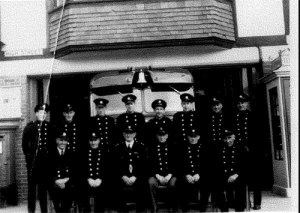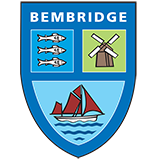Committees
History
Bembridge - origins
In 1870-72, John Marius Wilson’s Imperial Gazetteer of England and Wales described Bembridge as follows:
BEMBRIDGE, a village and a chapelry in Brading parish, Isle of Wight. The village stands on the E side of Brading harbour, 2½ miles ENE of Brading. It has a post office under Ryde, and is a coastguard station. It rose from obscurity about 1826; acquired some handsome houses and a hotel. The chapelry was constituted in 1827. The tract of 2½ miles by 1 ½, between Brading harbour and the Channel, bears the name of Isle of Bembridge; and the termination of it on the NE is called Bembridge Point. A ridge of hill, across its neck, called Bembridge Down, has an altitude of 355 feet, commands a very gorgeous view, was the scene of a rebuff of the French in 1546, and is crowned by a granite obelisk, 70 feet high, erected in 1849 to the memory of the late Lord Yarborough. The rocks present a fine study to the geologist; and lignite, fuller’s earth, and red ochre are found. The Bembridge ledge, and other ledges run off from the E coast into shoals; and the Bembridge floating lights are situated to the ENE, and show two lights 18 and 25 feet above deck and 43 feet apart. A railway, 2 miles long, was authorised, in 1864, to be formed from Yar Bridge to Bembridge Point, with pier and landing-place. The church was built in 1845, and is in the early English style.
It wasn’t until the closure of Brading Haven was finally completed in 1880 that ‘Brading Harbour’ became known as Bembridge Harbour. Up until that time the sea extended all the way down as far as Yaverland and Sandown, which may explain the above reference to the ‘Isle of Bembridge’.
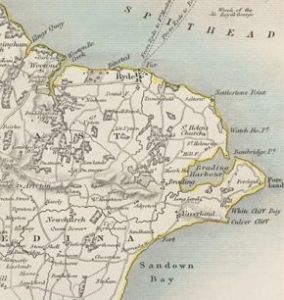
Victorian era
The Victorian era brought a new pier, paddle steamers and the railways to the harbour, turning Bembridge from a small fishing village into a fashionable destination.
In 1882 the Spithead Hotel was opened, achieving Royal patronage in 1883.
The Yellowsands Hotel at Whitcliff Bay closely followed in 1885.
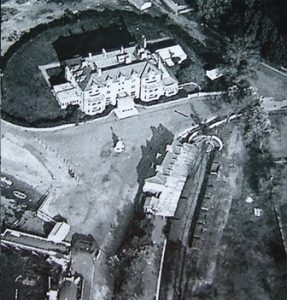
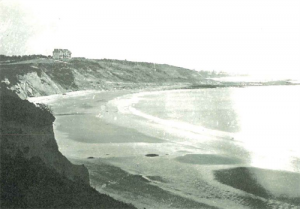
In 1545 Bembridge was invaded by the French. The village was set on fire in an effort to draw out the English Fleet from Portsmouth. When the plan failed and with the local militia providing resistance the French were eventually repelled.
In 1862 with the threat of another French invasion, this time from Napoleonic troops, Bembridge Fort was built just south of Bembridge Down.
The fort is now owned by the National Trust who offer pre-booked guided tours – (See our ‘Useful Links’ for further information).
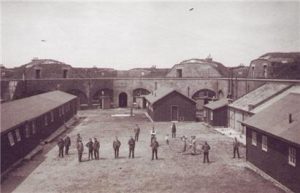
History today
In addition to the Fort, there are still many historical landmarks still to see in and around Bembridge.
Built around 1700 the Island’s only surviving windmill can be found in Bembridge. The Grade I listed building is owned and run by the National Trust – (See our ‘Useful Links’ for further information).
The Holy Trinity Church in Kings Road is a Grade II listed building, built in 1845-6 possibly by T Hellyer. It is a rebuilding of an earlier church built in 1820 by John Nash.
The Palmer Memorial on the Point is a Grade II listed memorial to Rev. James Nelson Palmer erected in 1910. He and his wife were leading figures in the community and founded many local groups including Bembridge Football Club and Sailing Club.
And in the High Street you can find a beautiful Grade II listed K1 telephone kiosk.
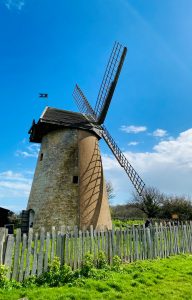
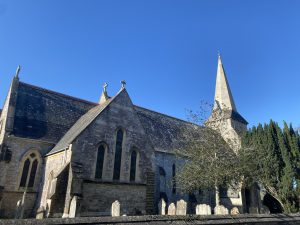
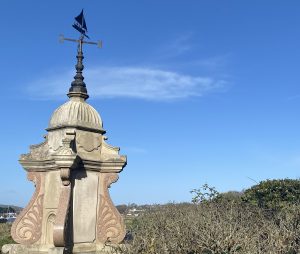
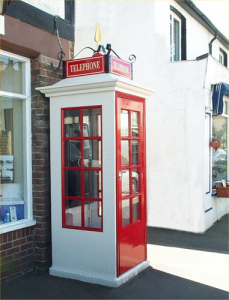
The high street past and present
The village high street to this day retains a traditional feel, with a local vegetable shop, fishmongers, village pub, butchers, bakers…. (and no doubt somewhere you’ll find a candlestick maker).
Here are a few pictures of the past.

